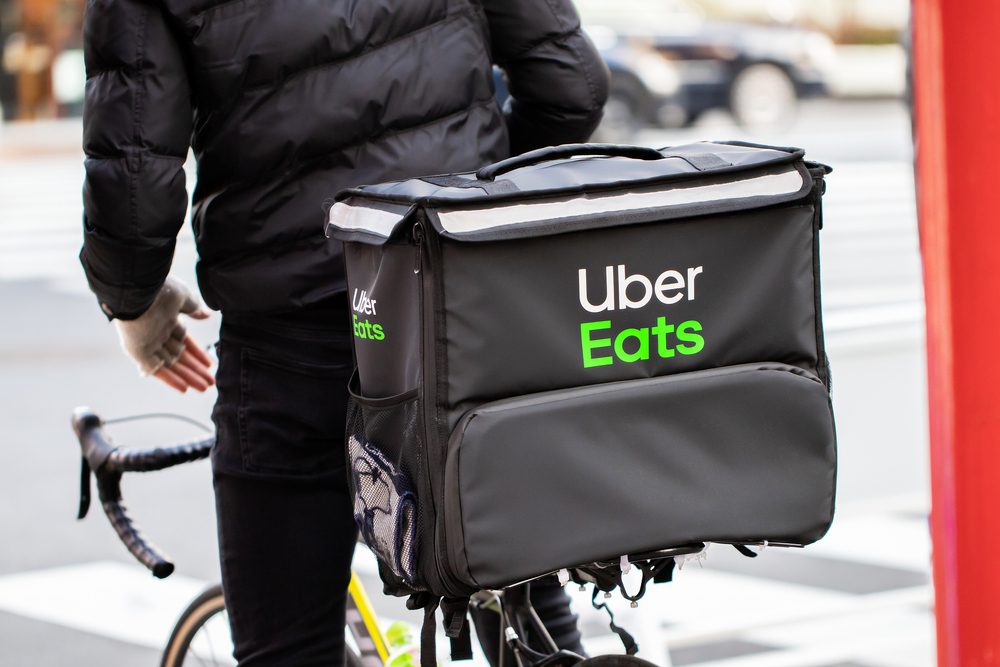Uber Eats Aims for Control of Ghost Kitchens on Platform

Aiming to gain greater control over the digital restaurant market, Uber is rethinking ghost kitchens.
The company announced Tuesday (March 28) the launch of its Certified Virtual Restaurant Program, through which Uber Eats takes a more central role in creating and controlling virtual brands on its marketplace. The aggregator offers merchants a plug-and-play solution to add restaurant concepts curated by Uber and created alongside virtual brand partners Virtual Dining Concepts, Nextbite and Acelerate.
“With the boom in virtual restaurants over the past several years, we’ve noticed a wide range of approaches to creating virtual restaurant brands,” John Mullenholz, Uber’s head of virtual restaurants and dark kitchens for the U.S. and Canada, said in a statement. “We’re excited about launching this program to connect the best virtual brand builders in the industry with small businesses across the country–and to bring the very best virtual brands to consumers’ doorsteps.”
Uber noted in an email to PYMNTS that restaurants would continue to be able to create their own virtual brands and work with other licensing partners, provided that the concepts are in line with the aggregator’s quality guidelines for ghost kitchens. That said, on Monday (March 27), before this announcement, Mullenholz told the Wall Street Journal (WSJ) that the company would remove 5,000 online storefronts, accounting for about 13% of virtual brands in North America.
Indeed, in Tuesday’s announcement, Uber highlighted the proliferation of ghost kitchens in recent years, noting that the company aims to “refocus its virtual restaurant operations.”
Notably, Uber has tried to take a more active role in the ghost kitchen space before. The company began its efforts before the pandemic, shutting them down in mid-2020.
“At this point, we don’t have a desire ourselves to own real estate,” Uber Eats’ then-vice-president of delivery (now senior vice president) Pierre-Dimitri Gore-Coty told The Financial Times at the time. “We’ve had a few pilots, but no intention at this stage to start our own proprietary network of dark kitchens, or warehouses … or however you call them.”
Yet, this move marks a significantly different approach to the space than Uber’s ultimately unsuccessful initial foray into the space. Rather than starting with a company-owned site that restaurateurs could rent out, Uber is now partnering with well-established virtual brand companies to license out concepts for restaurants to prepare in their own kitchens.
“For all parties, this program adds a layer of verification and transparency for customers, certifying that their food is coming from high quality kitchen operators, giving the customer an added level of comfort when ordering from Uber Eats,” Stephanie Sollers, CEO of Virtual Dining Concepts, commented in Tuesday’s announcement.
The ghost kitchen space is on the rise, with delivery orders representing a small but growing fraction of total restaurant sales. Research from the February edition of PYMNTS’ Connected Dining study, “Connected Dining: Rising Costs Push Consumers Toward Pickup,” which draws from a survey of more than 2,100 U.S. consumers in January, finds that 10% of consumers reported having ordered their last restaurant meal from delivery. This share was up significantly from 7% just the month before.
Additionally, the ghost kitchen model can be highly appealing to restaurants looking to boost profit margins, as Nextbite, one of Uber’s providers, explained in an interview with PYMNTS’ Karen Webster last year.
“We’ve really wanted to help these restaurants to maximize their underutilized kitchens, ’cause every restaurant has these opportunities to sell more food if they had that demand to do so,” Nextbite CEO Alex Canter told Webster.

